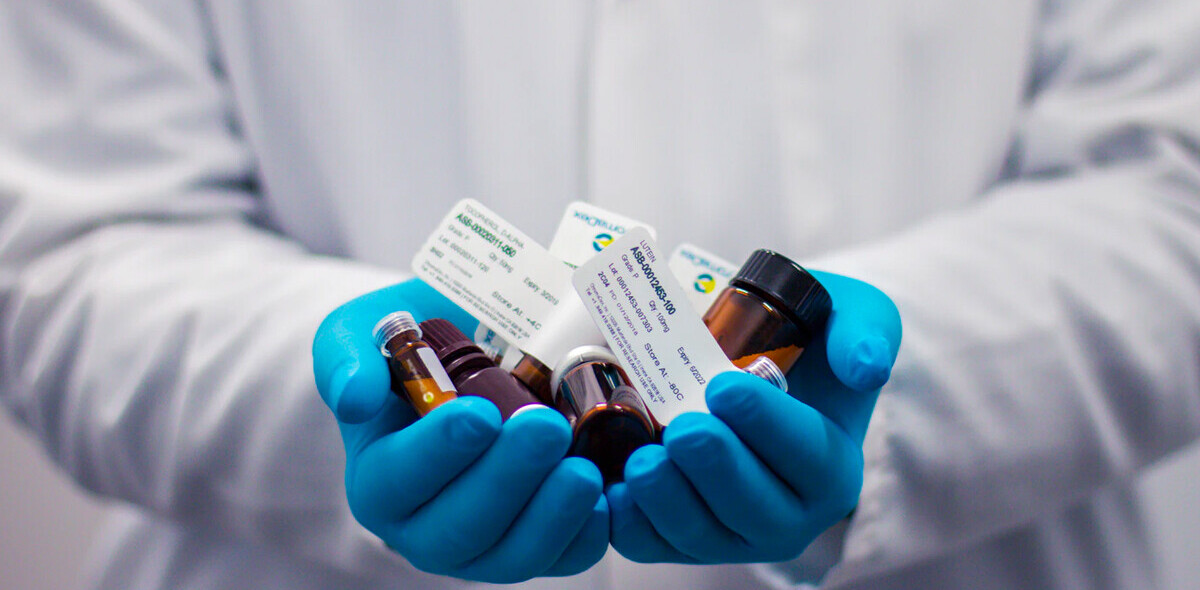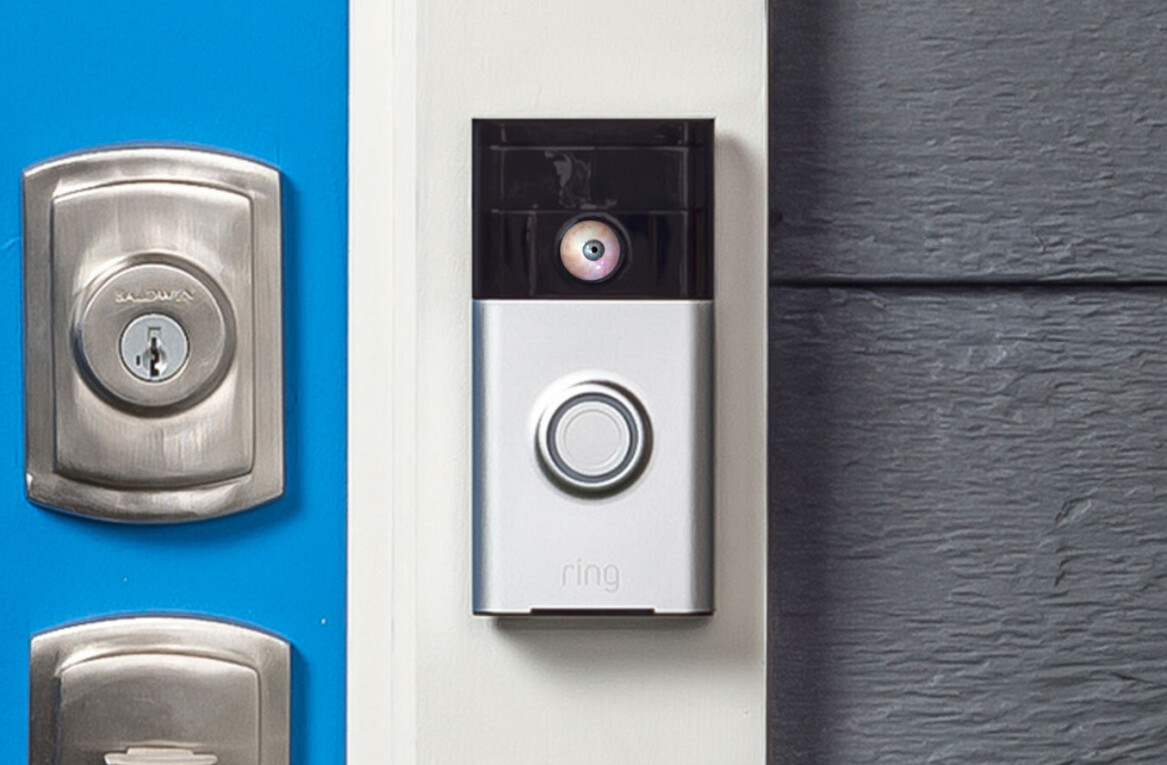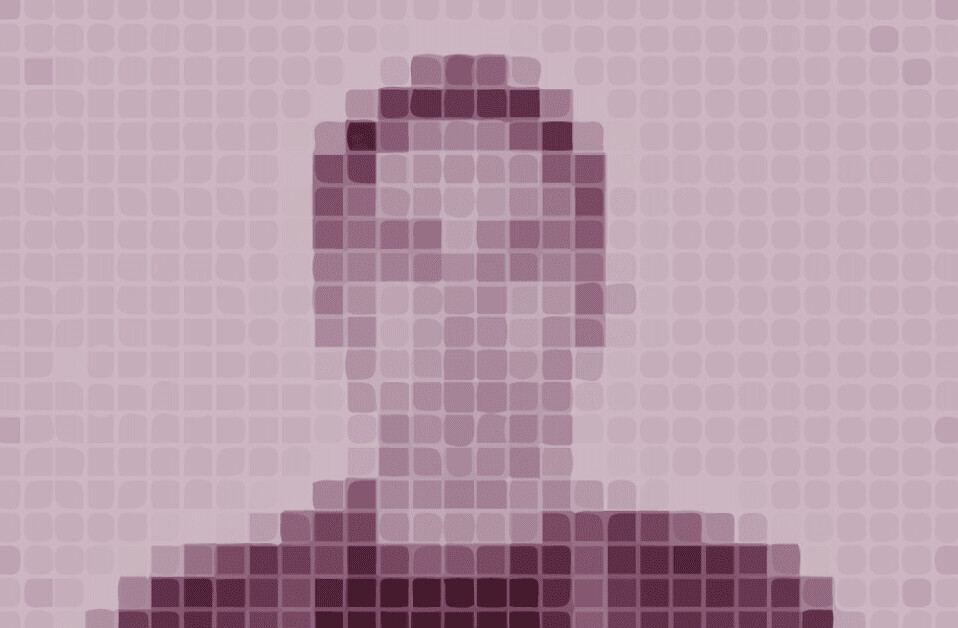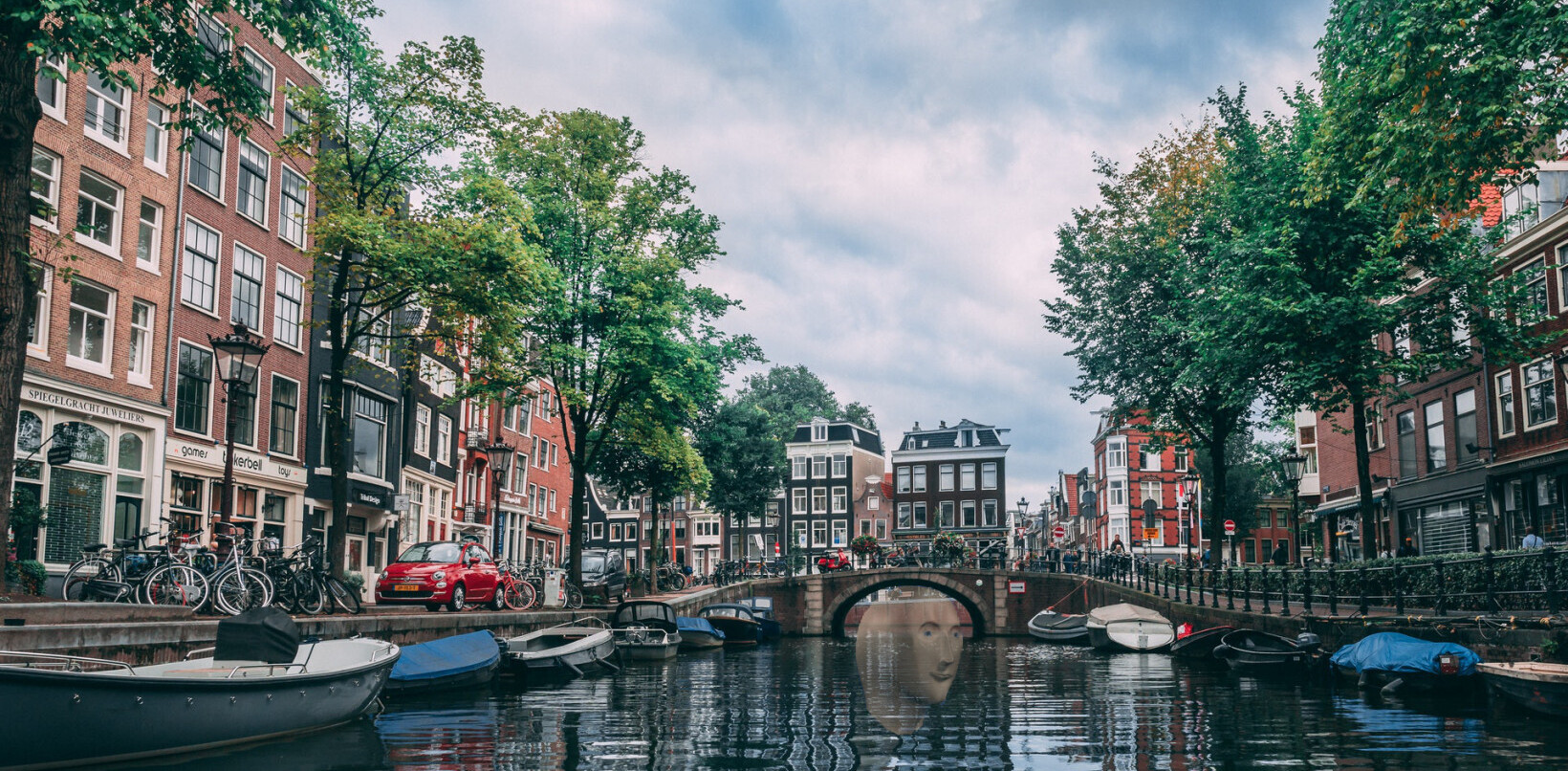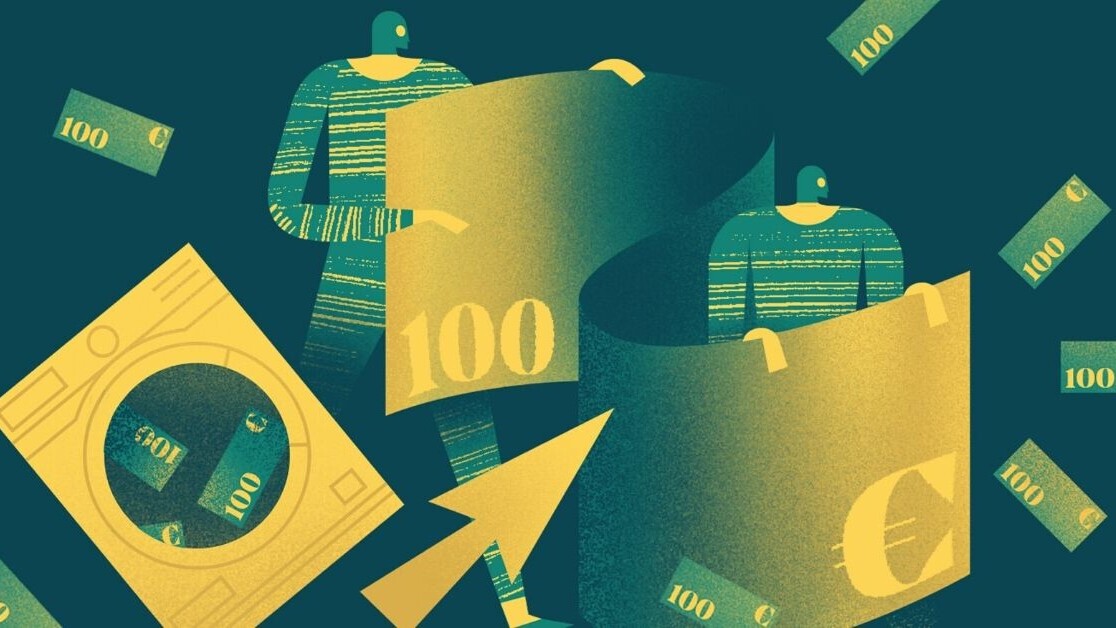
Almost nine months ago, we published episode one of the first-ever TNW podcast, Forensic Finance. This podcast, created along with Dutch bank ABN Amro, is an exploration into how banks can help solve global issues.
The inaugural episode discussed how analyzing bank data can help human trafficking victims, who are believed to number 40 million around the world.
The second episode is finally here, this time on the topic of how banks detect money laundering.
According to the IMF, money laundering makes up 2-5% of all gross domestic product. Doesn’t sound like a lot? That’s about $1.8 to 2 trillion a year. This vast sum of money could be used to fuel underground economies, crime, and even undermine democracy.
What does money laundering actually look like on the street? And are banks part of the problem, or the solution? How can technology help? Listen to the second episode of Forensic Finance to find out.
And if you prefer reading, we’ve added the full transcript below – but you’ll be missing out on some pretty epic music.
Transcript Forensic Finance, Episode 2: ‘How banks detect money laundering‘
Callum Booth: Back in November 2018, police were searching a vacant home in Amsterdam’s Nieuw-West neighborhood. They found a gun, multiple phones, a money-counter… and a laundry machine stuffed with $400k in cash.
This was an unusually literal case of trying to clean “dirty” money, but laundering accounts for a staggeringly large amount of the world’s income.
Brigitte Unger: The best description or estimate was from the IMF who said it’s 2 to 5% of the gross domestic product of the world.
Callum Booth: 2 to 5% doesn’t sound like a lot.
Brigitte Unger: If you calculate how much it would be in US dollars, that would be about 1.8 or 2 trillion US dollars, which is, so to speak, 12 zeros after a number. We cannot imagine such big numbers anyway.
Callum Booth: Because of emerging technologies, money laundering is incredibly difficult to investigate and prosecute. But what exactly is it?
Brigitte Unger: My name is Brigitte Unger, I’m Professor of Public Sector at Utrecht University School of Economics since 2002. I’m originally from Austria. I’ve been advising many governments regarding anti-money laundering policy. I sit in EU working groups — one on asset confiscation, one on virtual currencies.
The core thing is that you try to hide the criminal origin of your money or proceeds of crime. You try to do this mostly by trying to put it into the financial system. So try to hide that it’s criminal money from drugs by bringing it into the banking system so that it looks clean.
Callum Booth: The actual term “money laundering” originates further back, from America’s Prohibition era. In the 1930s, Chicago gangster Al Capone hid the proceeds of his illegal alcohol sales by slipping the money into the cash registers of washing machine companies. Sound familiar?
He was eventually convicted, and went to jail, for tax evasion, as money laundering was not yet illegal. While hiding dirty cash amongst washing machines certainly hasn’t gone out of style, it wasn’t until relatively recently that money laundering became a crime of its own.
Brigitte Unger: It’s a very young crime, that the proceeds of crime, the hiding and trying to bring it back into the financial system, is considered a crime on its own. Money from drugs was the first one. But eventually, the definition broadened that it was money from drugs, from fraud, from corruption… After September 11, also the financing of terrorism was added. And in 2015 finally, tax crime was added.
Callum Booth: Money laundering did not actually become a federal crime in the U.S. until 1986, and not until 2001 in the Netherlands, a country which is especially attractive to money launderers.
Brigitte Unger: The Netherlands is a rich country with a lot of financial expertise, with a highly developed financial sector, with wonderful trust companies, with letter code box companies, and all things which are very attractive for money launderers to use the Netherlands at least as a vehicle to send their money from here, then somewhere abroad.
Callum Booth: Large volumes of money passing through illegal channels have real consequences, not only on the economy, but also global politics.
Brigitte Unger: The most dangerous thing is if criminals have so much profit on crime by laundering it, that they can buy off business. They can set their own business next to the legal business and become a criminal business and undermine politics.
Callum Booth: This is still happening around the world.
Brigitte Unger: What you have at the moment in some South African countries: criminals as heads of state and surrounded by ministers, which are drug dealers, convicted criminals… you have basically the end of democracy and this is very scary.
Callum Booth: But let’s zoom in. Why should you and I care?
Jacqueline Makbouli: People should care about money laundering in our streets because we don’t want that kind of shops in our public domain, because it’s not good for our local economies. There’s unfair competition with honest and committed shop owners. Furthermore, most of those shops have a shabby appearance, which doesn’t contribute to the attractive appearance we want in our shopping centers.
Callum Booth: The voice you’re hearing is Jacqueline Makbouli.
Jacqueline Makbouli: I’m a chair of a political party in Beverwijk. And in Amsterdam, I’m an advisor on public order and safety issues. And I work daily on fighting the excesses of money laundering in the public domain.
I was a policewoman in Amsterdam from 1993 until 2009 and I’ve been working on the streets of Amsterdam every day… So I know a lot about how it works on the streets.
Callum Booth: It was Makbouli’s work as a policewoman that got her interested in financial crime.
Jacqueline Makbouli: I was focusing on what the public order was like, the safety issues were like, and then I found out that there was a lot of crime, and that there was a lot of money involved. We saw people riding around in really expensive cars, people who were having companies which we were wondering if they were real companies, with no customers or products. So we were wondering how that worked.
Callum Booth: There are some telling signs when a shop is involved in money laundering.
Jacqueline Makbouli: You see, most of the time, it’s really the interior of the shop is really shabby. It doesn’t look like somebody really wants to sell something. You see different personnel there all day. You don’t see a lot of customers. And it doesn’t feel like they have a responsibility to our neighborhoods, so they’re there only for sending money out.
I have one in Amsterdam that is a butcher and he has a money transfer service. So that’s really strange because it’s not part of your plan when you start the shop.
Callum Booth: Certain kinds of shops are more likely used as money laundering sites than others.
Jacqueline Makbouli: We are talking about really simple shops like telephone companies, travel agencies, hairdressers, jewelry stores, catering industries, like bars and restaurants. Criminals like to work from real estate where it’s common that people walk in and out all day.
Most of the shops I mentioned have additional possibilities for money transfers. So money transfers like Western Union, are common, but there are a lot of money transfers which don’t have a license.
Callum Booth: Recently, governments have been cracking down on financial institutions for not doing enough to investigate their own customers. Just last year, the Netherlands opened an investigation into major banks including ING, Rabobank, and ABN Amro for failing to probe or report suspicious transactions.
Yet despite not making money laundering illegal until 2001, the Netherlands is considered a leader.
Brigitte Unger: I think that the Netherlands is fighting money laundering better than most other European union member states… The law has expanded and expanded and becomes sharper and sharper in a very American style. I don’t think this is a good development.
The U.S. has the punishment style, we call it also the sticker policy, while the Netherlands basically persuade people to do something the carrot style: give them the carrot like the rabbit so that they are voluntarily participating.
Callum Booth: While European countries are moving towards a sharper, more effective American-style punishment, Unger thinks the traditionally cooperative Dutch method is best.
Brigitte Unger: Money laundering depends on the compliance of the whole society. And in order to convince society that it’s meaningful to fight money laundering, you must persuade them rather than threatening them.
And I hope now that in the future, the old Dutch style of sitting together — the banks, the public sector, the officials — and develop a system where you basically mutually help each other rather than one punishing the other.
Callum Booth: Until then, both Makbouli and Unger think there needs to be better tools to help law enforcement.
Jacqueline Makbouli: Money laundering is on the rise. And I think we should get more tools, easier tools in law to intervene better. We have to do it quicker. Because now we have to wait for long, long, long investigations.
Callum Booth: While many see the world’s banks as a source of the problem, they are actually a key part of the solution.
Brigitte Unger: At the moment, banks have sophisticated systems to discover money laundering transactions… But as long as the public data on individual criminals are not matched with transaction data that the banks have, it will be very difficult to identify criminals.
So what is needed is not so much having more sophisticated systems within the public sector and having more sophisticated systems within the private sector. But to find a technological way, a black box, how you can exchange information between the public and the private sector without violating privacy issues, and double encryption and all kinds of new methods which ICT has developed should make this possible.
Anne van Petersen: My name is Anne, and I’m a customer due diligence analyst at ABN Amro.
Callum Booth: Anne is part of ABN Amro’s Detecting Financial Crime department.
Anne van Petersen: Customer due diligence is a general term and that the bank is legally obliged to have all the activities and the whole profile of all their customers in scope.
That means that we make reports for our clients, we analyze risk factors, and we make a full profile for business clients, and for what purpose. So make sure that the bank is only dealing with honest and transparent clients and to investigate the criminals and make sure they don’t bank with ABN Amro.
Callum Booth: Anne became a security analyst because she wanted to make a difference — but the benefits didn’t hurt either.
Anne van Petersen: I finished my studies and I have always been interested in economics and finance. But I also want to do something more with a social purpose. And that’s why when I was finishing my studies, I stumbled upon this role as security analyst. I thought it was really interesting to work both with financial institutions, and at the same time make sure that society’s safe from criminals.
Callum Booth: Technology has been both good and bad for banks detecting money laundering.
Brigitte Unger: On the one hand, technology creates new possibilities, like Bitcoin money laundering or Ethereum money laundering constructions, or ecommerce, or gold buying, which is difficult to trace who is the owner. But I think that technology will help or can help to detect criminals.
INTERMEZZO: Make a difference with your skills in IT. At ABN AMRO your talent and creativity will help reinvent the future of finance. Find out what it’s like to work with ABN AMRO, at amro.com/vacancies.
Callum Booth: Banks like ABN Amro are developing their own tools to help them detect suspicious money transactions faster and more accurately.
Anne van Petersen: In my role, I use several technologies like, for example, detecting adverse media, we use a program for that. And with our program, we scan our clients for if there’s any negative news about them.
My job would be a lot harder without tech because we would have to do everything manually. And I think that would be very difficult.
Callum Booth: Anne uses data collected by programs to determine if a client should be investigated.
Anne van Petersen: First of all, there are certain systems in place that monitor transactions, for example, or that monitor adverse media. And if it’s something suspicious, then eventually it will end up on my desk.
Callum Booth: In order to determine whether or not a client is flagged, Anne also looks to external sources.
Anne van Petersen: There are several topics we address like business activities, transaction patterns, the ultimate beneficiary structure of the company, like who are the actual owners? We use several open sources in our investigation. So from the obvious Chamber of Commerce to Google Maps, for example, to see the location of our clients, to land registry, or even social media sometimes…
If we have a full profile of the client, we will have some questions. And we will contact the client. And when that’s done, all of the questions will be written down in a report.
Most of our clients have neutral risk, but if there are certain red flags that cannot be explained, it will become like an increased risk case or perhaps even unacceptable. And then in that case, we have to say goodbye to our clients.
Callum Booth: Banks like ABN Amro are increasingly incorporating new technologies, like AI, into their processes. But ultimately, automation is there to help the bank’s employees improve effectiveness. While technology has helped Anne create reports on suspicious clients faster, humans are still an important part of the process, and the job will always require their analytical thinking skills.
Anne van Petersen: My job would be a lot harder without tech because we would have to do everything manually. And I think that would be very difficult. The human brain is necessary in this type of job because you need to think creatively in a way to mitigate certain risks. And you need to think about how to approach clients. I mean, it’s a very human job as well. And you need interpretation. In the end, it’s the human brain that has to decide if the risks are manageable or not. And that can, in my opinion, not yet be replaced by robots.
Callum Booth: This was the second episode of Forensic Finance, a podcast by TNW and ABN AMRO, exploring if and how banks can help solve urgent global issues.
We’d like to thank Brigitte Unger, Jacqueline Makbouli, and Anne van Petersen for sharing their stories. Subscribe for more episodes or search on your favorite podcast app. I’ve been Callum Booth. Thank you for listening.
Creative concept and research: TNW
Audio production: Big Orange
Big thanks to: ABN AMRO
Get the TNW newsletter
Get the most important tech news in your inbox each week.
This article is brought to you by ABN AMRO. Whatever your specialism, with ABN AMRO your talent and creativity will help build the bank of the future. Find out what it’s like to work for ABN AMRO and learn more about their exciting job opportunities.

